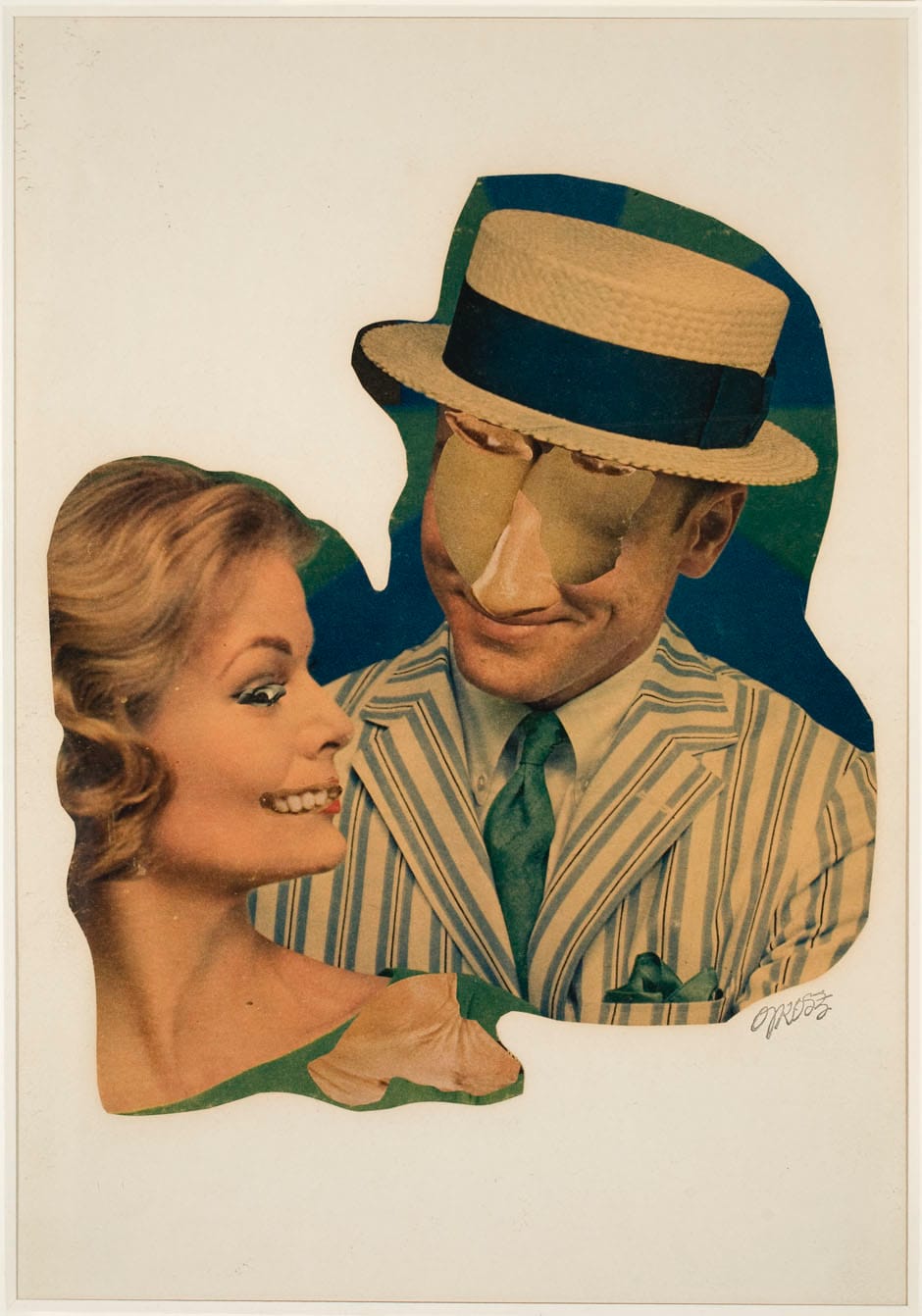-
Artworks
George Grosz
Love at First Sight, ca. 1957cut-and-pasted printed paper on paper20 1/2 x 11 1/2 in (52.1 x 29.2 cm)GG0568German painter, draughtsman and illustrator. In 1914 Grosz, like many of his generation, volunteered for service in World War I. Six months later he was back in Germany. Although he...German painter, draughtsman and illustrator. In 1914 Grosz, like many of his generation, volunteered for service in World War I. Six months later he was back in Germany. Although he was called up again in 1917, he was finally discharged as unfit for service after an episode involving violence and a short compulsory spell in a mental hospital. With the war his artistic approach changed fundamentally, taking its starting-point from his own experience of battlefields, death and destruction. The war made Grosz into a misanthropist and a Utopian. In his art he fought against preoccupations of Wilhelmine society by uncovering their shadowy aspects of crime, murder and erotic license. He joined the Berlin Dada movement in 1918. He remained politically committed even when he left Dada and turned to a realistic style of painting in the 1920s, in keeping with the spirit of the decade. During this period Grosz became internationally recognized as one of Germany’s most significant critical artists. The antagonisms of artistic and political life in the Weimar Republic found an extreme form of expression in Grosz’s work.
Grosz himself was torn between a partisan, rationalist attitude and a passionate, reckless craving for the feverish pleasures of the 1920s, between basic Communist convictions and a longing for the USA. He moved to New York City in 1932 and began teaching at the Art Students League, where he taught James Rosenquist. Under the influence of new, positive impressions, and because he had lost his faith in the strength of the masses, he turned away from political propaganda and lost his mordant style. Almost affectionately, he caricatured New York types and painted landscapes from nature. In 1958, with his collages that point in some ways towards Pop art, he reverted to Dada techniques. In 1959 he returned to West Berlin, where he died soon afterwards.Provenance
Estate of George Grosz (#1-153-10), Munich and RomeExhibitions
George Grosz: The Years in America 1933 - 1958, Galerie Nolan Judin, Berlin, February 18 - April 25, 2009; David Nolan Gallery, New York, September 16 - October 31, 2009
George Grosz in America 1933–1958, The Arts Club of Chicago, Chicago (May 12 – 23 July, 2010)
George Grosz, Collages 1928–1959, Galerie Fred Jahn, Munich (2005)Literature
Juerg M. Judin, Ralph Jentsch, and Barbara McCloskey. George Grosz: The Years in America, 1933-1958. Ostfildern: Hatje Cantz, 2009, cat. no. 86, pp. 238-239, ill.
Siegried Gohr, George Grosz: Collages 1928-1959, exh. cat., Galerie Fred Jahn. Munich, 2005, cat. no. 6, pp. 26-27, ill.
